LARC - light amphibians for the supply of cargo
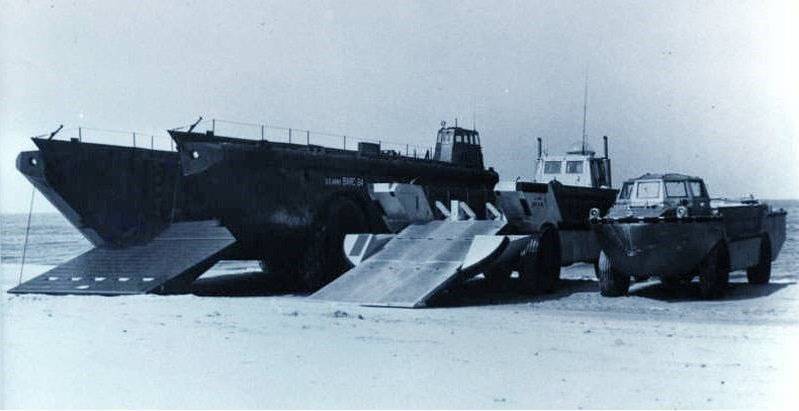
The light amphibian family for US supplies includes three types of light amphibians capable of traveling by land and sea LARC V, LARC XV and LARC LX capable of carrying payloads of 5, 15 and 60 tons, respectively. Light amphibious for the supply of goods (LARC V, Lighter, Amphibious, Resupply, Cargo) is a small amphibian intended mainly for the transport of standard containers (CONEXE) and other goods placed on pallets. Amphibian for supplying LARC XV with cargo is slightly larger than LARC V, but is used for the same purposes as LARC V. The largest of the three LARC LX was widely used in Vietnam. She was able to carry two 20-foot containers or one 40-foot container. LARC-5 and LARC-15 transported up to three-quarters of all necessary goods, LARC-60 the remaining quarter. By the middle of the 1980-s, most of these amphibians were removed to the reserve and decommissioned. Despite the fact that they are no longer produced, three sizes of amphibians (LARC-5, LARC-15 and LARC 60) are still operated both in the army and in the "capitalist economy".

Brigadier General Frank Schaffer Besson began the Second World War with the rank of lieutenant of engineering troops. Among other things, he organized the railway transportation of equipment supplied to the USSR under Lend-Lease. For his remarkable abilities by the end of the war, he rose to the rank of brigadier general. Upon returning to the United States in 1948, he held the post of Deputy Chief of Army Transportation for almost five years. Besson was promoted to Major General in 1950 and assumed command of the Army Transport School at Fort Estis in 1953. In this post, he initiated numerous projects related to improving the efficiency and effectiveness of the army transport system. In particular, he introduced the active use of standard containers, vessels with crane loading and unloading (RO-RO), and also improved the ability to unload goods from transport vessels on the coast. In addition, it was largely thanks to him that the transport aviation and even the U.S. expressway network. Noteworthy projects include cable cars connecting a special barge with a 25-meter tower with a cable along the principle of ski lifts with ropes, as well as prefabricated collapsible berths that are still in use. However, he paid most close attention to the ability of the army to deploy its forces directly from ships to an unprepared shore through amphibians. Thanks to him, LARC (Light Amphibians for Cargo Supply) were created. Major General Besson commanded the army transport from 1958 to 1962 and played an important role in the procurement of BARCs (Barge, amphibious, resupply, cargo, amphibious transport and cargo barge), called the "Besson's Ark." Frank Besson became the first four-star general in stories US Army Transport Corps. Now Besson's name carries a large landing ship USAV GEN Frank S. Besson, Jr. (LSV-1) Logistics Support Vessel.
LARC-60 / LARC-LX / BARC
Freight amphibious barge BARC, later known as LARC LX (light amphibian for cargo supply, Roman numeral LX also means load capacity) is designed to transport tons of cargo to 60 and was used to transport wheeled and tracked vehicles, including engineering equipment for preparing the bridgehead landing. It was the only amphibian at the disposal of the army, capable of landing on the shore during the surf. BARC was loaded onto cargo ships with large cranes for transportation overseas to the area of deployment. BARC could act on shaky soils with a total weight of 145 tons (with a payload of 55 tons). This was enough to transport foot containers to the 40, which could then be unloaded from LARC using a crane, narrow container trucks or on rollers similar to those used for unloading transport aircraft.
The first BARC tests were conducted at Fort Lawton, Washington in 1952. Four experienced BARCs were built by LeTourneau Inc, which specialized in the production of much larger equipment than BARCs, including offshore oil rigs. BARC was designed to transport from a ship to an unprepared shore or back one 60 ton tank or an infantry company with full uniform (120 men). In emergency cases, it could transport up to 100 tons of cargo (limited overload) or up to 200 people (according to the recollections of Vietnam War veterans, they managed to load up to 130 tons). The dimensions of this car are impressive, length 19.2, width 8.1 and height 5.9 meters. The weight of the empty BARC was 97.5 tons, the diameter of each of the four wheels was 3.2 meters, which ensured a ground clearance of 0.9 meters. To load equipment and personnel on their own, the front of the amphibian could be lowered, and was also equipped with a folding ramp. A winch with a thrust of 12.7 tons located in the rear of the cargo compartment made it possible to independently drag into the cargo compartment one 12-meter (20-foot) or two 6-meter (20-foot) containers along the roller guides. BARC itself could be transported on semi-submersible vessels, in the docking chamber of amphibious vessels.
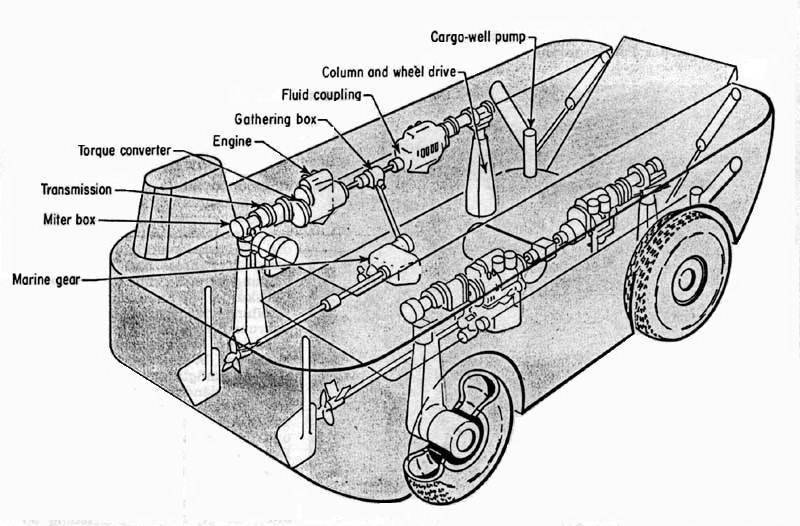
BARC is equipped with four 8-and GMC two-stroke cylinder diesel engines with a volume of seven liters and horsepower 165 each (at 2100 revolutions per minute). On land, each of these engines through a three-stage automatic transmission set in motion one wheel. On the water, two engines from each side were driven by one double propeller with a diameter of 1.2 meter. The maximum speed was 32 kilometers per hour on land and seven and a half knots on the water. The driver was located in a small cabin on the port side in the rear part of the vehicle. In general, the power plant included 12 gearboxes, 2 air compressors, 8 hydraulic pumps and 2 alternators. All engine management systems were pneumatic, and hydraulic steering. Big problems were delivered by air compressors. They were located down in the engine room next to the gearbox propellers. Mechanics often had to mess with these compressors. The whole system was airtight, and after the failure of both air compressors there were serious troubles.
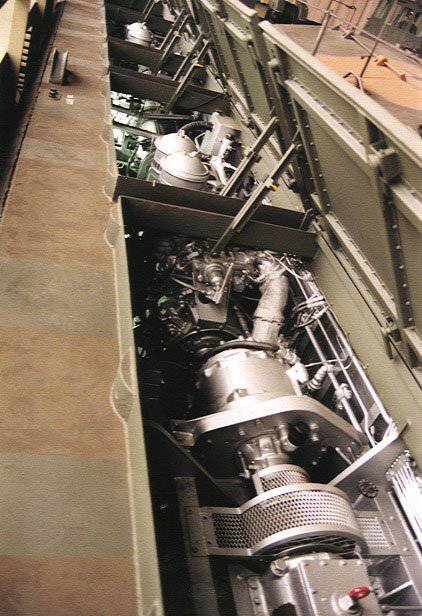
On the first BARC versions with tail numbers from the 6-th to 20-th cabins (wheelhouses) were located in the nose of the amphibian. In order to improve water handling on the next versions, the cabin was carried in the stern. However, when driving an amphibian over land, the driver, located in the cabin in the stern, had practically no view ahead of the car, and therefore he had to rely only on gestures of the signalman, who was in the bow. All that was on the BARC can be controlled from the cockpit, except for the front ramp, which was controlled from the nose of the amphibian.
Each of the wheels with a diameter of 3200 mm could be controlled independently. BARC could go skid ("crab") right or left 30 degrees, could be controlled either by the front or rear pair of wheels, or all at the same time. But even so, the turning radius of this amphibian was 23 meters, which is not at all bad for such a large car. The problem with the wheels was sticking to the hub. This is a common problem with amphibians, but since the wheels on BARC were huge, the problems with them were relevant. In order to tear off the wheel from the hub, several hydraulic jacks were used at the same time, as well as a cable tied to a gasoline tank truck, and only so more or less normally was it possible to pull off the wheel. It is noteworthy that BARC had a stiffer suspension, in other words, it simply did not exist. The wheels were rigidly fixed to the body. The depreciation functions were successfully performed by tires of low pressure and large diameter.
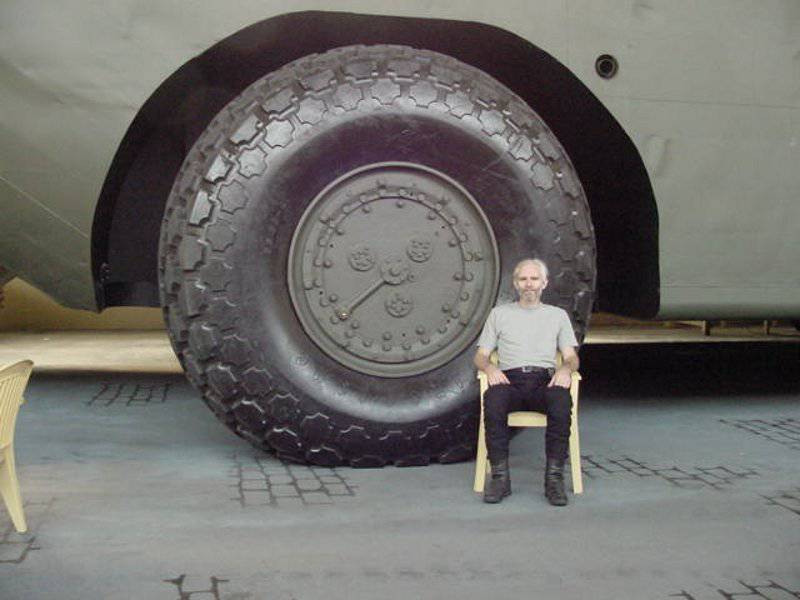
For the first time, LARC took part in the fighting in Vietnam where they were sent to support the 101 airborne division in the 1967 year, and then the 1 th armored cavalry division in the 1968 year. In July, 1968 in Wunder Beach BARC worked twenty-four hours a day. 5's mechanized division: jeeps, trucks, M113 armored personnel carriers and M-60 tanks arrived from America aboard large ships called Seatrain. The ships anchored near the coast, the BARCs moored at the sides, where they were loaded on an M-60 tank or two M113 armored personnel carriers, after which BARC promptly delivered them to the coast, where they drove off to the coast of Vietnam through the open BARC ramps.
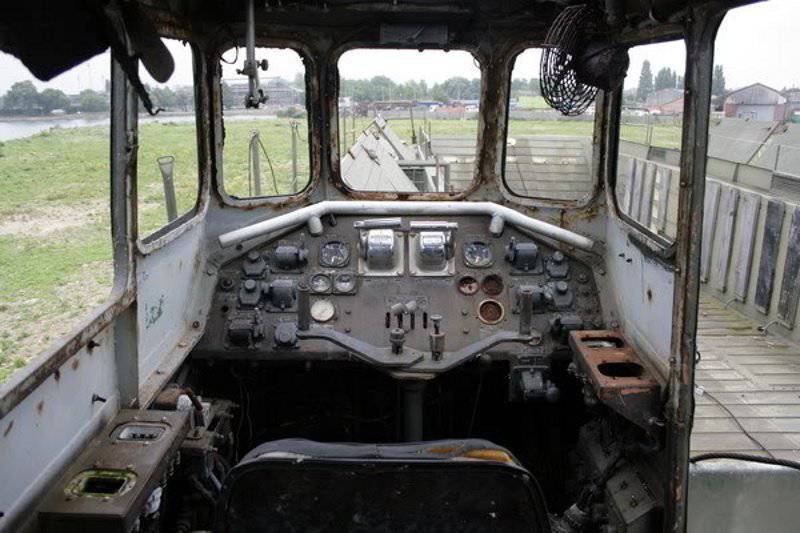
Maintenance BARC was very simple. It was only necessary to change the fuel, oil and air filters, and then the barge worked flawlessly. However, in Vietnam, three BARCs were lost and all due to mechanical problems. When they were stuck on the beach in the sand, they could not be pulled out. The fighters tried everything, including bulldozers and crane helicopters, but it was impossible to pull out the heavy BARC entrenched in the sand.
When deployed in Vietnam with the transfer of cargo from Vung Ro to Tuy Hoa, amphibians overcame about ten miles, and they always did it in pairs. For those designed to transport goods from ship to shore, it was a long hike, and just in case, the crews always took with them a 15 meter-long air hose. However, the BARC was the only amphibian capable of operating even with the excitement of an 4 score and disembarking even during the surf. The overall survivability of the amphibian also satisfied, it was able to move, even having lost two engines, and afloat even having lost three of four engines.
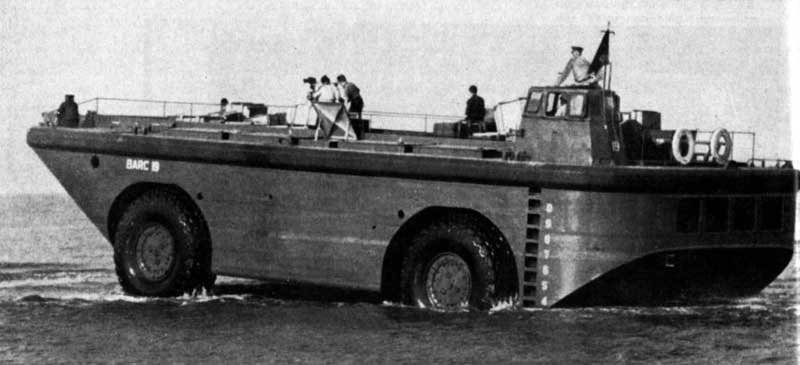
High-ranking military officials at least twice stated that the LARC-LX has certain advantages over the LACV-30 hovercraft and that it should be considered as an alternative to the amphibian. In 1979, the LARC-LX 36 amphibians were already at the disposal of the army. In its technical report number 225, the army reported that despite its low speed, the LARC-LX has no serious flaws and is perhaps the most versatile light amphibian. Fuel consumption with its 60-ton capacity was significantly lower than that of the 30-ton LACV-30. At nominal load, the fuel consumption of the LARC-LX was 144 liters of diesel fuel per hour compared to 984 liters of aviation kerosene per hour of LACV-30. LARC-LX could carry two army vans or one 40-a-foot commercial container, and also could transport a tank or any other cargo weighing up to 100 tons in a limited overload mode, which LACV-30 could not do. The work of the LARC-LX was not affected by the slight slopes and rough terrain causing problems in the steering and maneuverability of the LACV-30. In addition, BARC could overcome the rise with a gradient in 60%. Amphibian LARC-LX could be controlled by an ordinary soldier, which is not the case with the LACV-30 hovercraft, where crew members and mechanics were specially selected from the "specially presented" ones. "The complexity and high cost of the LACV-30 suggests that some systems must be operated by" specially gifted "and highly trained fighters." In addition, four engines in LARC-LX provide greater survivability compared to the two engines in LACV-30. Finally, the initial cost and cost of maintaining these amphibians was very different not in favor of hovercraft. The report also criticized dusty storms raised by LACV-30 when entering a military base.
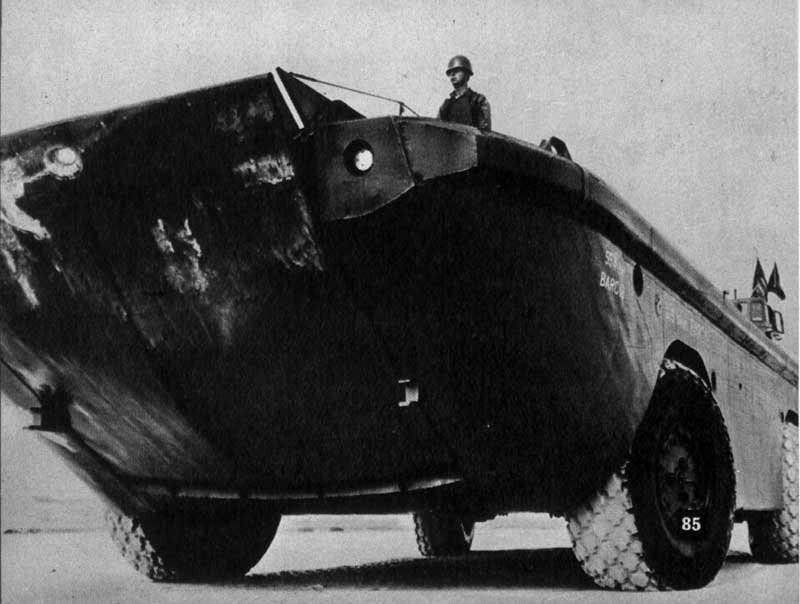
BARC was built at Treadwell Construction Co Midland, Pa., Great lakes Engineering works in River Rouge, Michigan and Transval Electronic Corporation. In total, about 60 units were built. The name BARC was changed to LARC in 1960. The LARC-60 maintenance site has become Fort Storey. In 1950's, this base was first used as a maintenance site for BARC barges, which ended in 1964. In 1982, the LARC-60 service base was upgraded, and a huge concrete platform for BARC maintenance and washing was built. Today BARC can be found in museums, in particular in the museum of General George Marshall in Liberty Park Overloon in the Netherlands or army dumps. Amphibians are also being marketed for sale, such an apparatus can be purchased for as little as $ 65 thousand.
Performance characteristics of LARC-60 / LARC-LX / BARC
Crew: 2
Weight: 100 tons
Body Material: Welded Steel
Powerplant: 4 diesel engine GM 6-71 power in 265 hp each
Fuel capacity: 2x 1135 liters
Power reserve: 240 km
Navigation range: 121 km
Length: 19.2 m
Width: 8.1 m
Height: 5.9 m
Wheel base: 8.7 m
Ground clearance: 0.9 m
Electrical supply: 24 B
Travel speed (on water): empty - 12.1 km / h; 60 tons - 11 km / h; 100 tons - 10.5 km / h
Speed (on land): empty - 24.5 km / h; 60 tons - 23 km / h; 100 tons - 20.52 km / h; Reversing: 60 tons- 4.5 km / h
Turning radius: 23 m
Gradient Override: 60%
Operating temperature range: -30 ° C to + 50 ° C
LARC-XV / LARC-15
The 15-ton and light amphibian for the supply of cargo LARC-15 (or LARC-XV where the Roman numeral XV also means load capacity) was presented in 1960-th year. Just like the LARC-LX, the amphibian is intended to transport goods from ships to the unprepared shore and then to their destination by land. It is capable of carrying 13.5 tons of cargo at wave heights up to 3 meters. Typical loads may include an Ml155 14 towed howitzer. The second LARC-15 usually carries a crew 2.5-ton tractor (6x6) howitzers and ammunition. The LARC-15 amphibian (like the smaller LARC-V model, which will be described later) was designed at the Ingersoll Kalamazoo branch of Borg-Warner Corporation, and production was established at the plants of the Freuhauf corporation. The main difference between the LARC-5 and LARC-15 is the location of the engine compartment and control in the LARC-15 aft. This is done to make it possible to place a hydraulically controlled nasal ramp for loading and unloading tracked and wheeled vehicles.
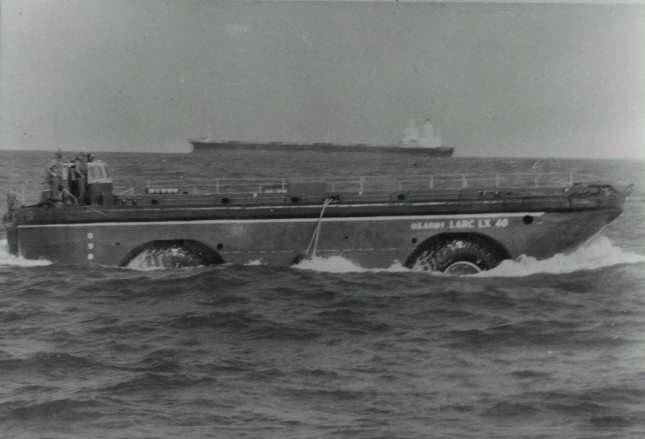
The LARC-15 tests were carried out by Fort Story from 1959 to 1967, as a result of which it received high marks and was approved for mass production. An important indicator was a high degree of unification across many nodes and aggregates with LARC-V, which in many respects facilitated logistics, repairs and somewhat reduced the cost of both machines.
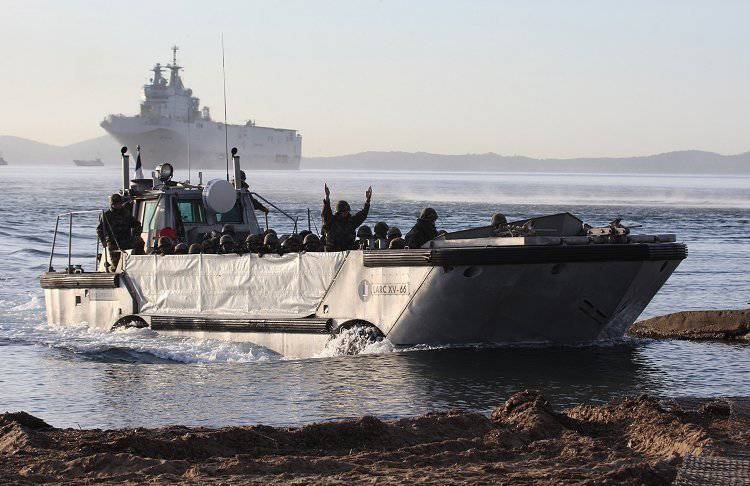
The LARC-15 is equipped with two Cummins diesel engines with horsepower 270 each. Both engines with all auxiliary systems are located under a fully enclosed cab, which, if necessary, can be removed entirely. The engines are connected by cardan gears via torque converters to reverse boxes used to change the direction of movement (forward or backward) over land and water. The two-stage differential transfer case is equipped with a power take-off box for one 4-blade propeller with a diameter of 914 mm located in the guide nozzle in a recess in the rear part of the hull. Propeller propeller is 34.3 kN. Torque to the propeller is supplied from both engines through the transfer case and power take-off. Through the transfer case, the torque is sent to the onboard gearboxes with cross-axle differentials and braking mechanisms from which, via cardan gears, to the bevel onboard gearboxes of each wheel and further to the wheel drive axle. In order to reduce fuel consumption, front-wheel drive can be disabled.
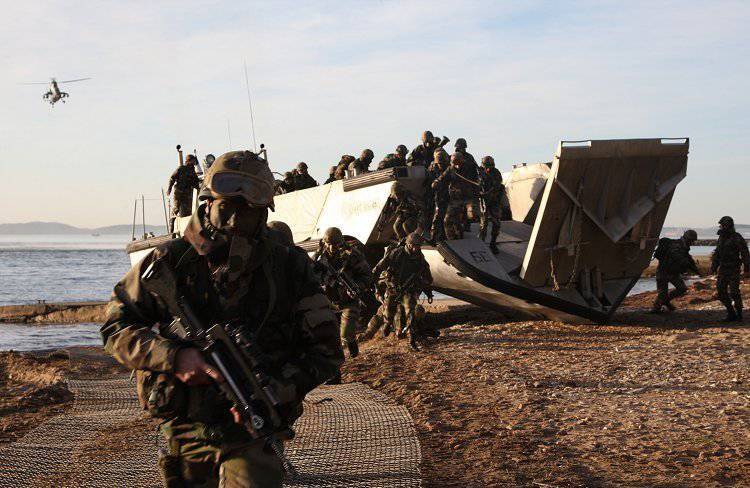
Amphibian equipped with two independent hydraulic systems. The main system serves the power control mechanisms, drives for bilge pumps and power cylinders of the nasal ramp. The auxiliary system serves all the other servos of the amphibian, including the mechanisms of the braking system. For pumping seawater at the bottom of the hull are three water-pump with hydraulic drives.
http://farm1.staticflickr.com/81/236612871_e98694dee1_o.jpg
In order to reduce weight, the amphibious hull was made of aluminum alloy sheets. It has four wheeled alcoves, a lowered nose with a hydraulic ram 2.75 ramp, which is lowered by means of a hydraulic drive and serves for loading and unloading wheeled and tracked vehicles and other goods.
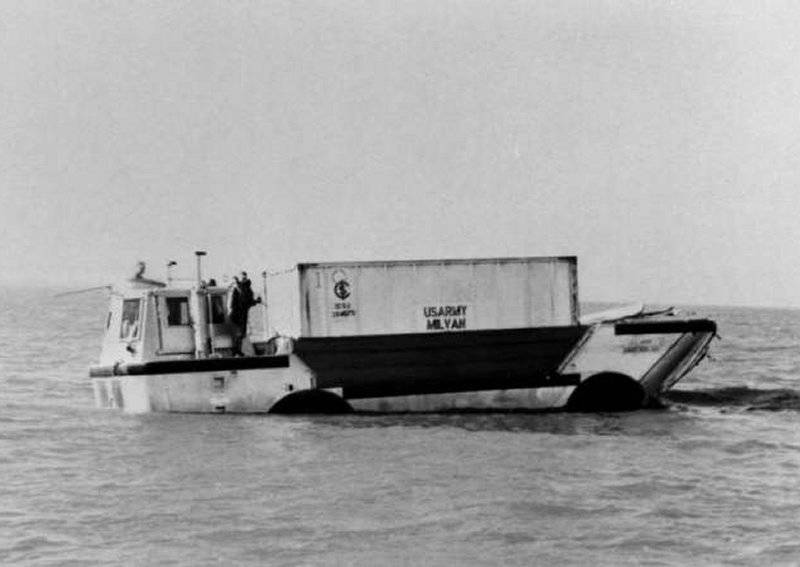
Like the LARC-60, this amphibian does not have a soft suspension and tubeless low-pressure tires sized 24.00х29 act as shock absorbers when driving on land. And just like in LARC-60, both pairs of wheels can be controlled independently, either only the front wheels are turned, or all four wheels are turned in the opposite direction, or all the wheels are turned in one direction and at equal angles for skating or the so-called "crab" .
The closed control cabin is located in the stern of the amphibian. Driving by land is stern ahead. For this purpose, an adjustable seat, steering wheel and brake lever are located in a special way. When the amphibian is moving in water, a second seat is used with control levers facing the nose of the car. In this regard, the instrument panel provides reading of their testimony from any side. If necessary, amphibian control on the water can be carried out standing. In this case, a special hemispherical lamp made of organic glass is mounted above the driver’s workplace.
The amphibian on the water is controlled by simultaneously turning the wheels and the three-bladed water rudder located behind the propeller. The sides of the platform are equipped with removable reinforced raised doors made of rubberized fabric to protect against splashing onto the load platform through low freeboards. For loading and unloading cargo from the sides with the help of a forklift with a fork grab, the bulwarks are dismantled.
Due to the use of aluminum alloy construction parts, the car turned out to be too expensive and only two times cheaper than the giant LARC LX. The cost of the LARC-XV was 165 thousand dollars in June prices 1968-th year. LARC XV did not become a mass amphibian, as a result, they produced less than 100 units. In addition to the US Army, LARC-XV were in service with the Bundeswehr.
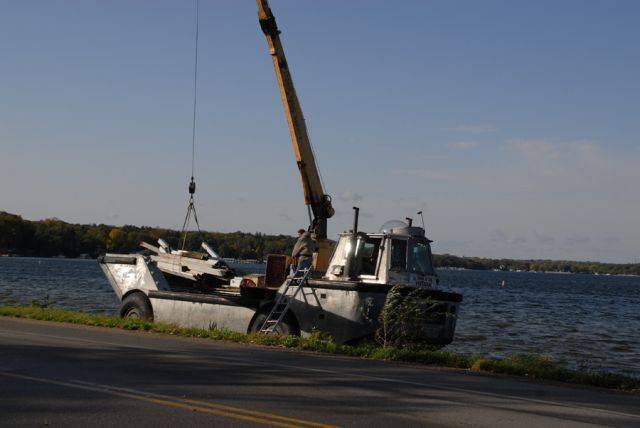
Tactical and technical characteristics of LARC-15
Crew: 2 person
Total weight: 34.1 ton
Load capacity: tons of 13.6 or 53 person
Length with ramp raised: 13.7 m
Ramp width: 2.7 m
Length with ramp lowered: 15.8 m
Width: 4.47 m
Height: 4.67 m
Freeboard: 0.38 m
Awning height: 4.55 m
Frame height: 4.2 m
Powerplant: Two horsepower 270 Cummins diesel engines each
Housing material: aluminum
Fuel capacity: 1360 liters
Power reserve: 482 km
Navigation range: 160 km
Coolant Volume: 123 liters per engine
Maximum land speed: 48 km / h
Maximum water speed: 15.3 km / h
Speed in economy mode: 11-14 km / h
Maximum allowable wave height: 3.5 m
Gradient @ 1.6km / h: 40%
Average sediment in water: 1.5 m
Radius of circulation on water: 23.5 m
Turning radius on land: external 11.1 m, internal 8 m
Clearance under the propeller: 0.4 m
Wheel base: 6.25 m
Sizes of a cargo platform: 7.28x3.6x0.98 m
Operating temperature range: -32 ° C to + 52 ° C
Electrical supply: 12 B
Battery Number: 4
LARC-V / LARC-5
The 5-ton and light amphibian for the supply of cargo LARC-5 (or LARC-V where the Roman numeral V also means load capacity) is an army amphibious vehicle originally used in 1960 for transporting non-propelled cargo from ships to the unprepared coast and further to dislocation . In addition, the goals and objectives of LARC V include: search and rescue operations in the coastal zone, pulling cables for towing lost watercraft and stranded watercraft, removal of navigation obstacles, installation of navigation aids, evacuation, transportation of people (troops, prisoners of war, refugees and victims) , fire fighting in the coastal zone, use as a diving platform, assistance in hydrographic work, assistance in floods and use in other unforeseen situations.
The head of Transportation Corps, Paul Yount, in 1956, was given the task of building a boat that could also move on land. The prototype was built in July 1959, and the final design was approved in 1963. Serial production was carried out at the company Consolidated Diesel Electric Corporation. Between the 1962 and 1968 years, about 950 machines were produced. In addition to the US Army, LARC-5 were in service in Australia, Argentina, Portugal and the Philippines. They took part in the invasion of the Falkland Islands in the 1982 year, but not directly in the fighting.
LARC V is a single-wheel, four-wheel, self-propelled diesel amphibian. The body is made of aluminum alloy and is not equipped with temper boards, but only with side stretch of rubberized fabric. The driver’s cab, which is open at the back, is located in the bow, and the power plant is in the rear The cabin is equipped with seats for the driver and two passengers and is equipped with a magnetic compass, a radio station, a heater, a windscreen de-icer and a portable fire extinguisher. If necessary, the back of the cab can be closed with a waterproof fabric. The components of the transmission are located under the bottom because of what the amphibian turned out to be quite high and does not allow vehicles to be loaded and unloaded under their own power (this is possible only from a special platform). The engine compartment is completely closed and equipped with a fire extinguishing system.
The first amphibian samples were equipped with a gasoline engine, were subsequently replaced by diesel ones. Amphibious equipped 4-x stroke eight-cylinder diesel engine Cummins V-903C power 295 horsepower at maximum revolutions per minute 2600, idle speed 650 per minute. It is able to navigate overland the 4x4 or 4x2 scheme (while saving fuel). On the water, an amphibian is driven by a four blade propeller with a diameter of 0.762 m and a 14.52 kN barge located in the aft tunnel of the welded aluminum hull. To improve the efficiency of the propeller is equipped with a nozzle. The engine is located in the stern above the propeller, connected to the center of the amphibian transfer case transmitting torque to all four driving wheels and / or to the propeller. For pumping seawater at the bottom of the case there are three water-draining pumps with hydraulic drives, as well as manual water-draining pumps.
The LARC V has a tonnage capacity of 4.5 and is capable of carrying up to 20 fully equipped fighters. The loading platform is completely open from the top, but to protect the cargo from splashing on the sides, you can install the beads made of rubberized fabric stretched onto the cable frame. The amphibian can also be equipped at the rear of the cab with a hydraulically powered cargo boom with a lifting capacity of up to 2.5 t.
Power reserve is 360 km by land and 40 miles on water. It is capable of speeding up to 48 kilometers per hour on land and 8.5 nodes at sea. Currently, 12 LARC V is stationed on board Advanced Forwarding Forces (MPF) ships. Due to its small size, the LARC V could independently drive inside the LARC LX.
Amphibian is able to operate in temperate, tropical and arctic climates, on the sand and coral coast, rugged terrain, off-road and maneuver at 3-meter waves.
Just like its large counterparts, the amphibian was equipped with a rigid suspension (that is, the suspension itself simply did not have wheels rigidly connected to the hull) and low pressure tires sized 18.00x25 ply inches acted as shock absorbers. Due to the large wheels and ground clearance in the 0.406 meter, as well as the presence of downshift amphibian has a good cross.
Driving on land was provided with a classic scheme with front steering wheels. The minimum radius of the gate times is 8 meters. The amphibian on the water is controlled by simultaneously turning the wheels and the three-bladed water rudder located behind the propeller. The minimum circulation radius is 11 meters.
The combat transport companies that adopted the LARC V are 165, 305, 344, 458, 461. The cost of LARC-5 was $ 44.2 thousands in 1968 prices of the year. When writing the technical specifications, it was assumed that LARC V will be used mainly in river mouths. Despite this, amphibians were actively used at sea, and therefore the loads it experienced led to increased wear of systems and mechanisms, as well as structural elements. As a result, LARC V faced problems with the burden and failure of some mechanisms. Also, the cost of maintenance is constantly growing, and some parts by that time were simply discontinued. At some stage, the question arose of the expediency of further use of these amphibians and the question of their cancellation and replacement was considered. Many LARC V have been transferred to the 35 backup mouth. Amphibian age exceeded 35 years, and they require major repairs. A thin aluminum body, the absence of a second engine could not but affect the survivability of the amphibian. As a result, no more than three hundred LARC V remained in the ranks of 1000-built machines.
Performance characteristics of LARC-5 / LARC V
Crew: 2 person
Total weight: 13.6 tons
Empty weight with fuel and crew: 8.6 tons
Load capacity: tonnes 4.5 (ogranichenno do 5 tonn) or 20 man
Length: 10.6 m
Width: 3.05 m
Height: 3.1 m
Freeboard: 0.254 m
Power plant: Cummins diesel engine horsepower 295 each
Housing material: aluminum
Fuel capacity: 2x 272 liters
Fuel consumption: 75 liters per hour
Power reserve: 402 km
Navigation range: 151 km
Coolant Volume: 123 liters per engine
Maximum land speed: 48 km / h
Maximum water speed: 9.5 knots
Speed in economy mode: 12.8 km / h
Maximum allowable wave height: 3.5 m
Gradient @ 1.6km / h: 60%
Average sediment in water: 1.5 m
Radius of circulation on water: 23.5 m
Turning radius on land: external 11.1 m, internal 8 m
Ground clearance: 0.9 m
Clearance under the propeller: 0.4 m
Wheel base: 4.88 m
Sizes of a cargo platform: 7.25x2.97x0.7 m
Operating temperature range: -32 ° C to + 52 ° C
Electrical supply: 12 B
Total was built 968 amphibians. At least 600 of them were flooded when the United States exited Vietnam from the 1970's. 15 October 2001 Year The 309 Transport Company (LARC LX) of the 11 Transport Battalion was disbanded. It was the last amphibious company in the US Army. Now the army is completely dependent on ordinary landing craft.
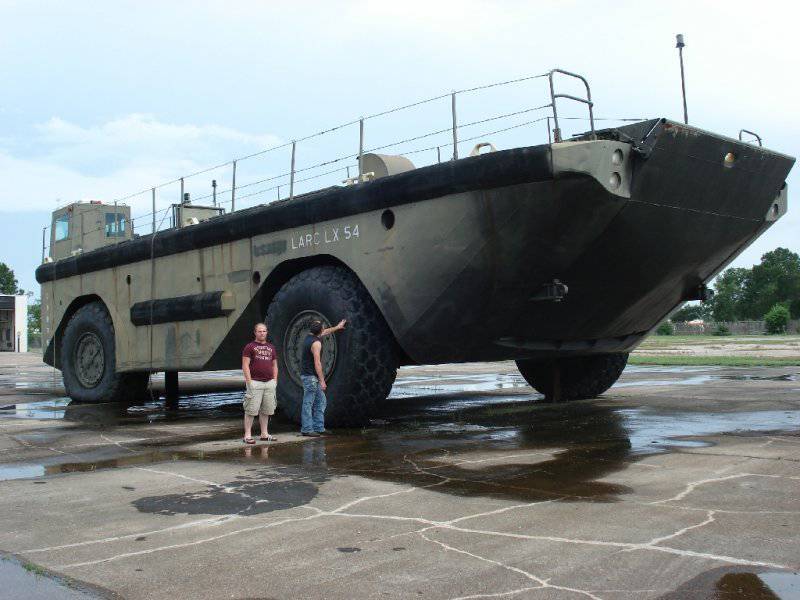
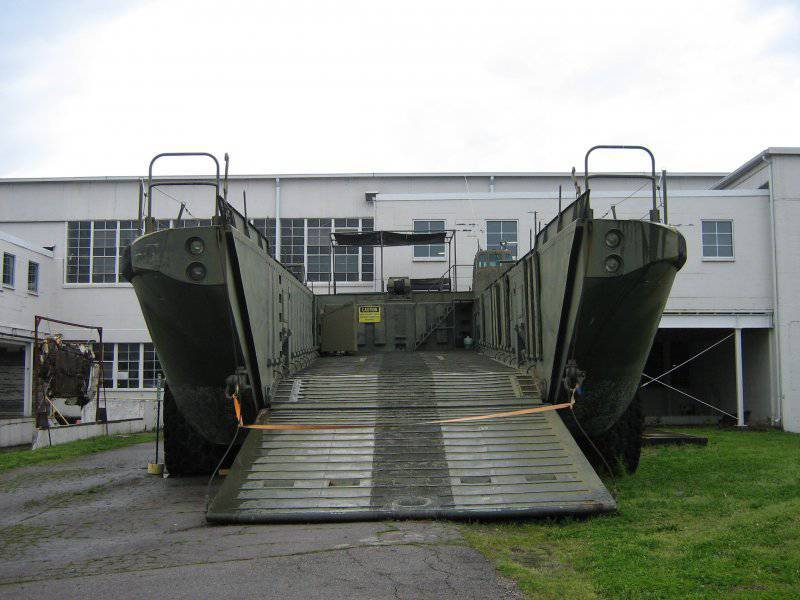
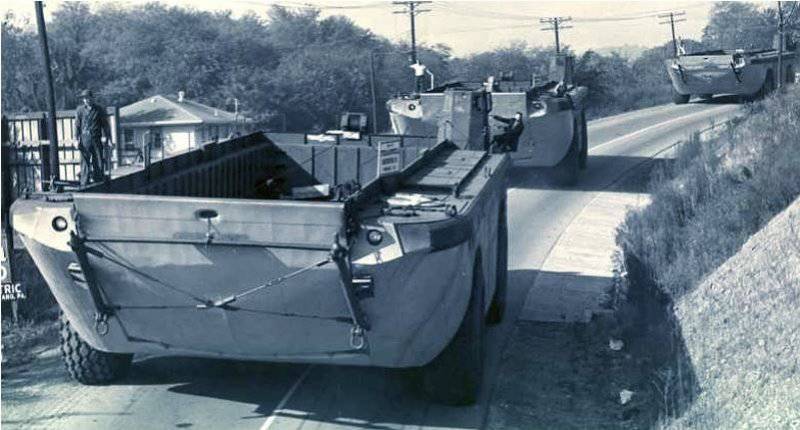
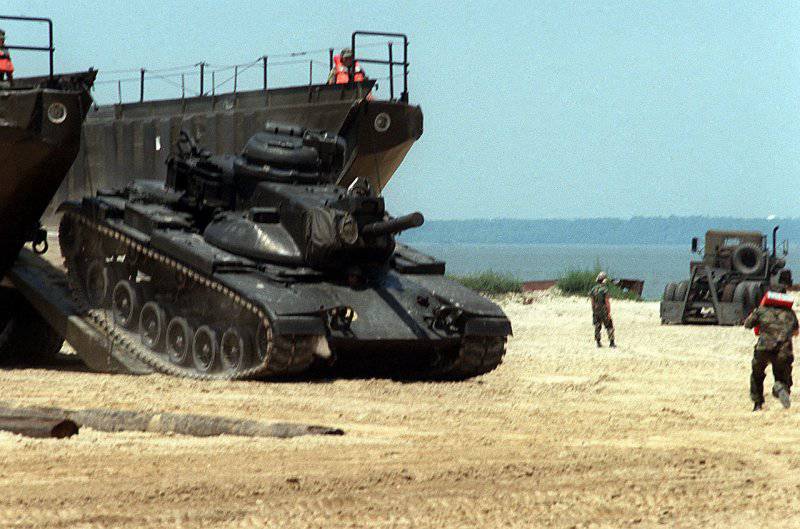
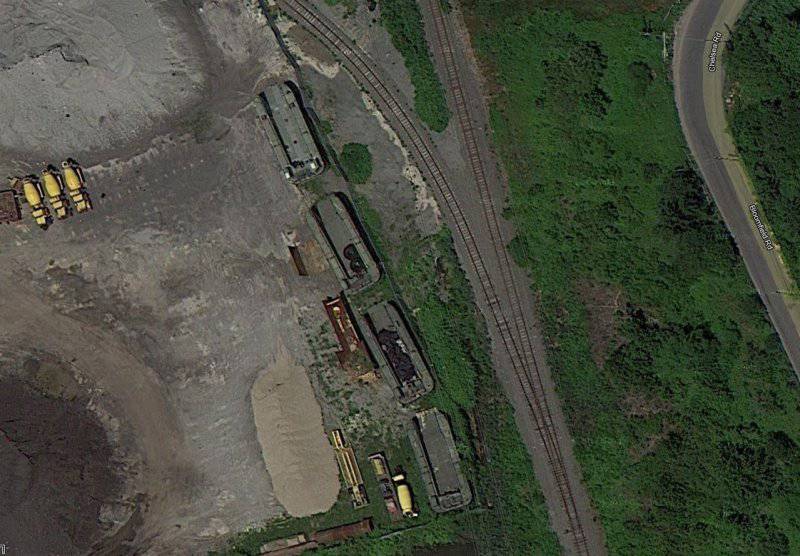
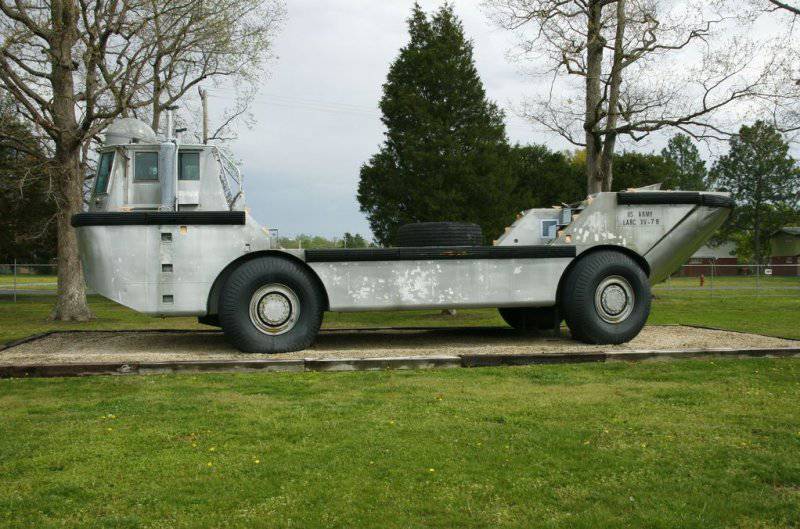
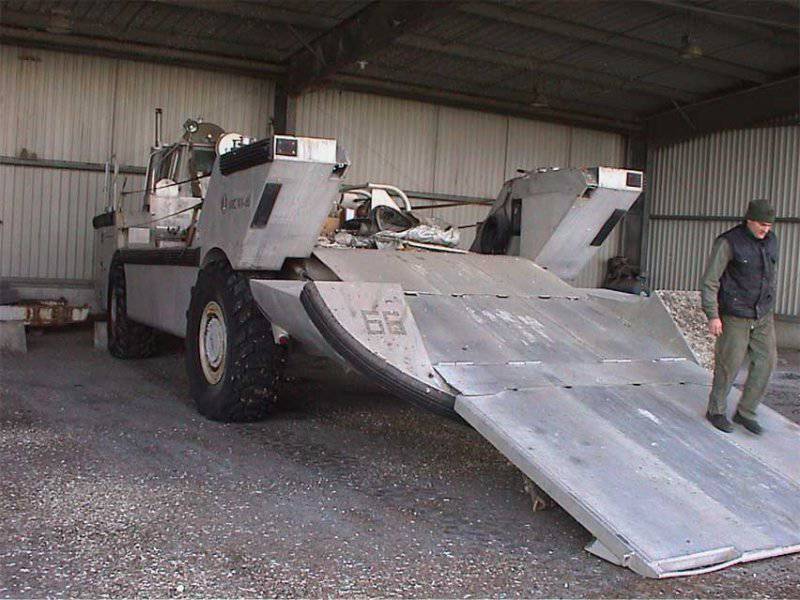
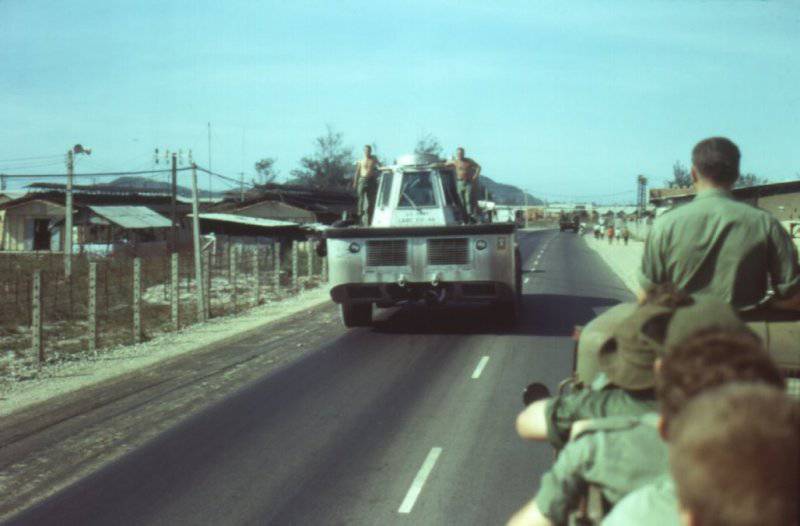
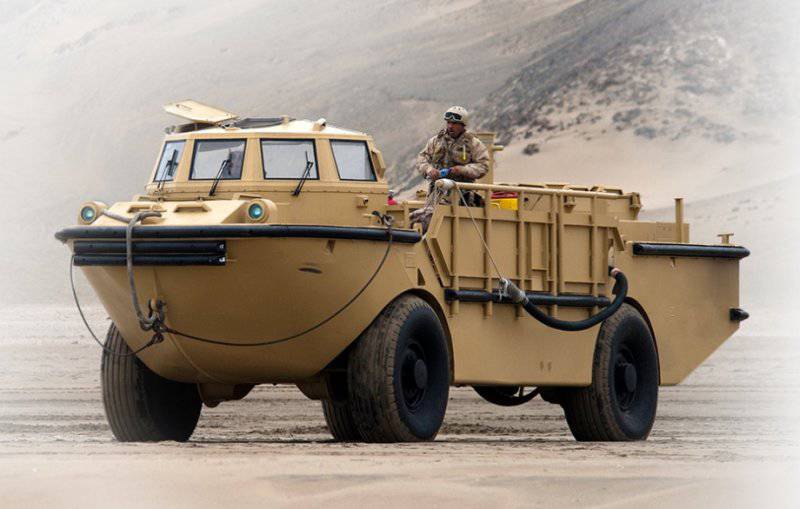
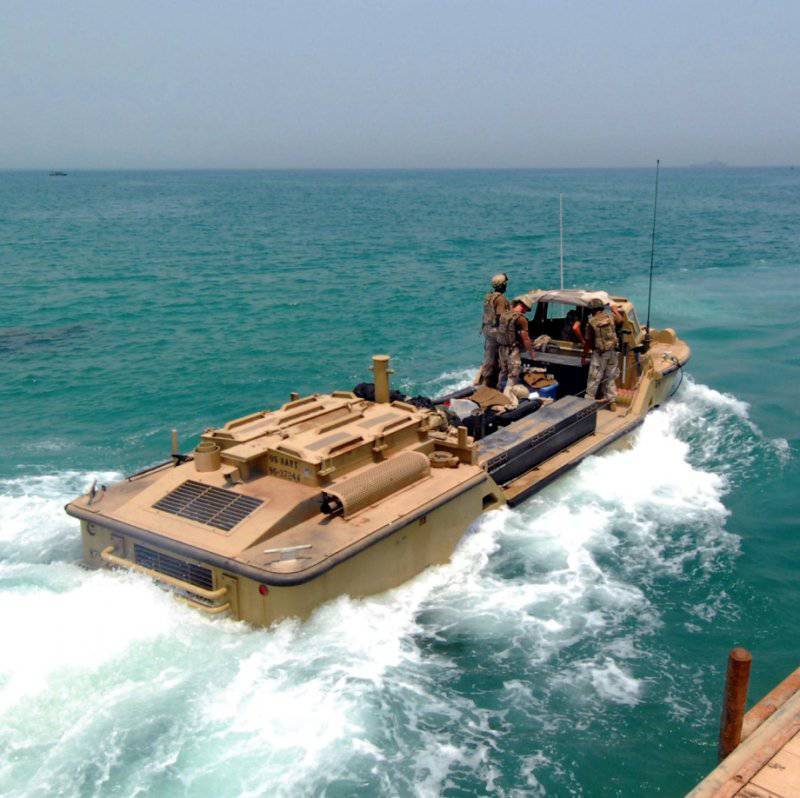
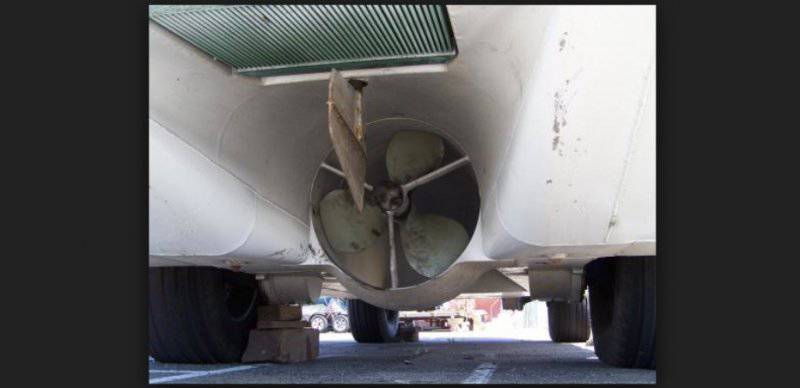
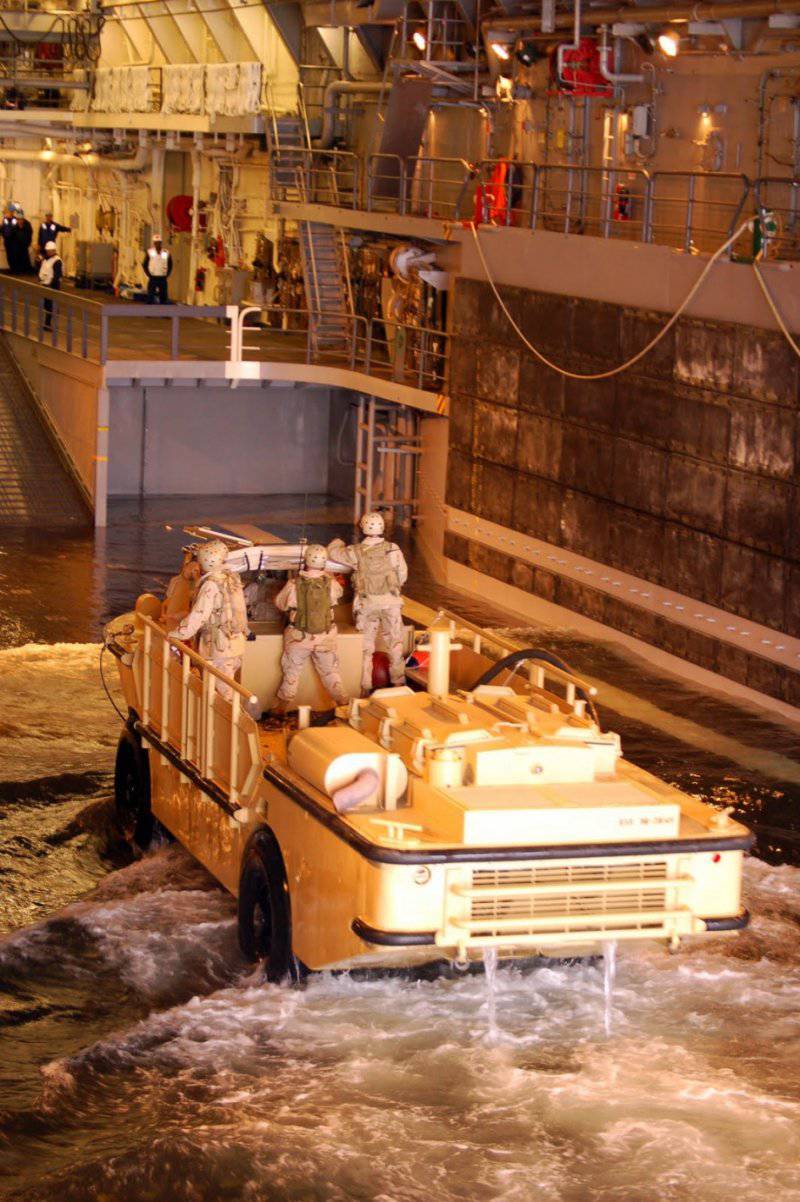
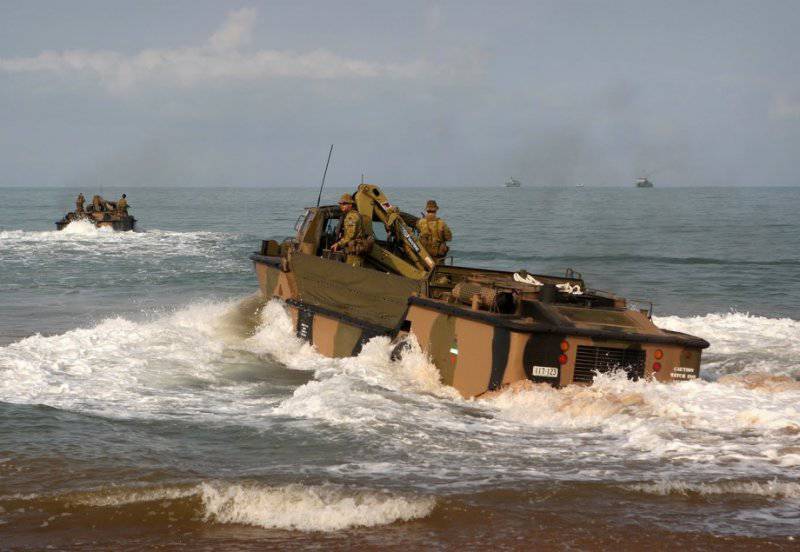
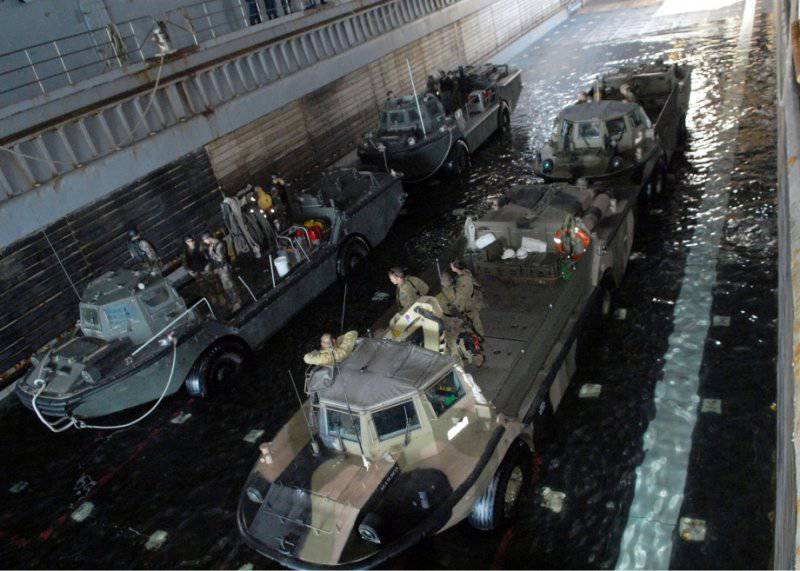
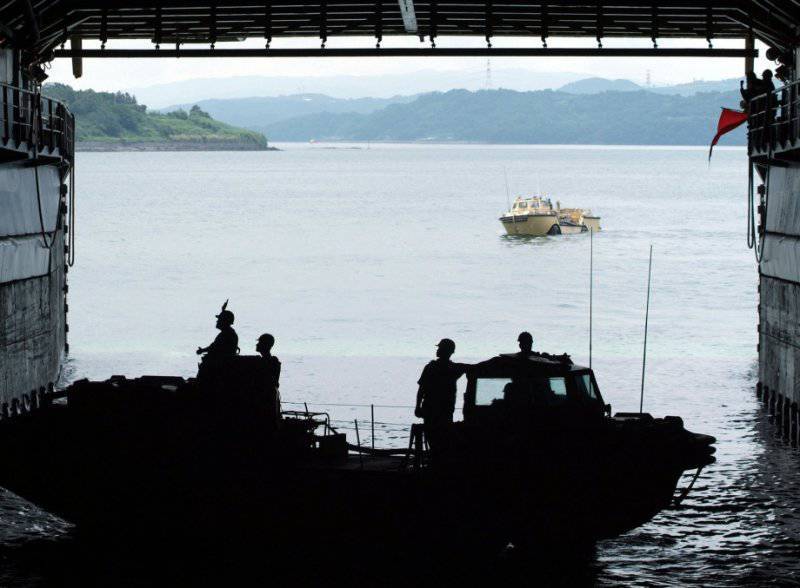
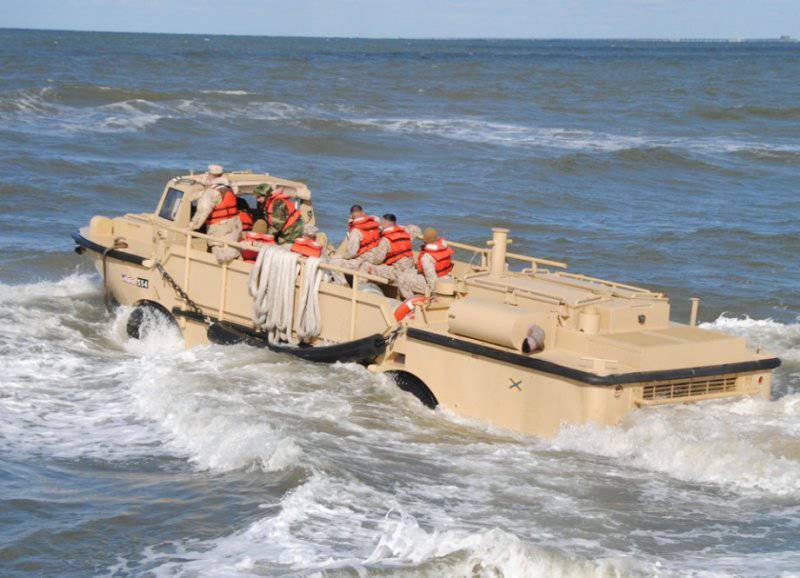
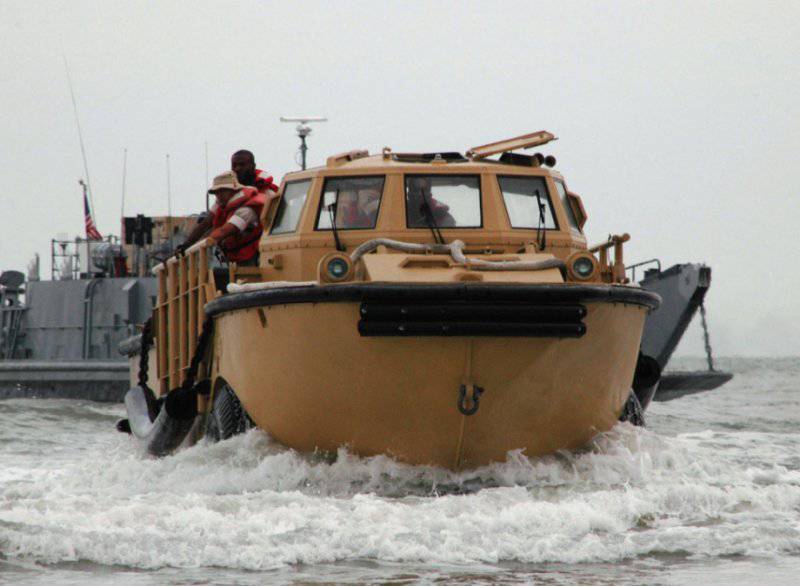
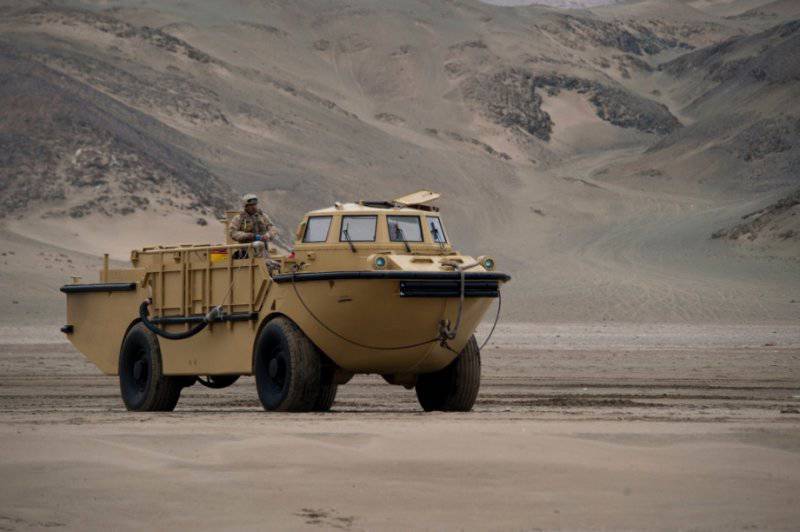
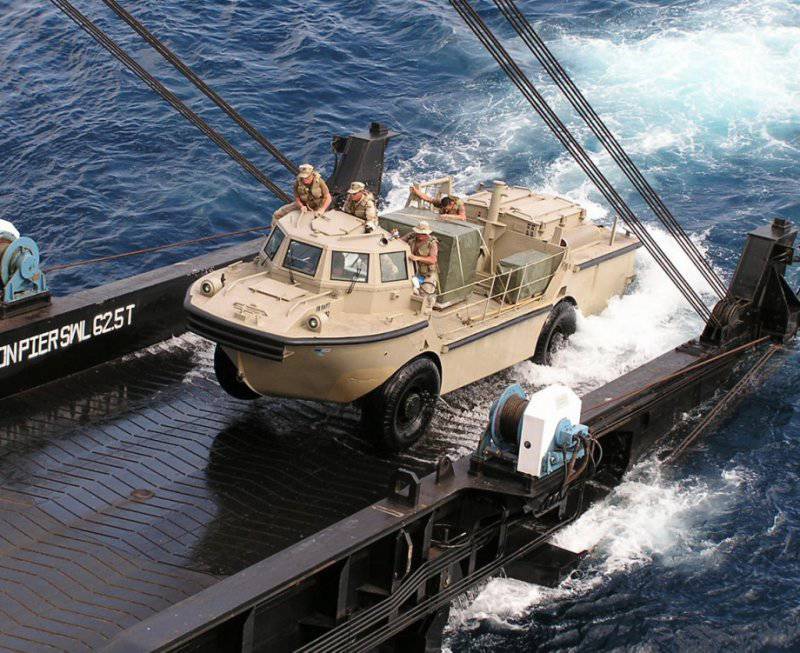
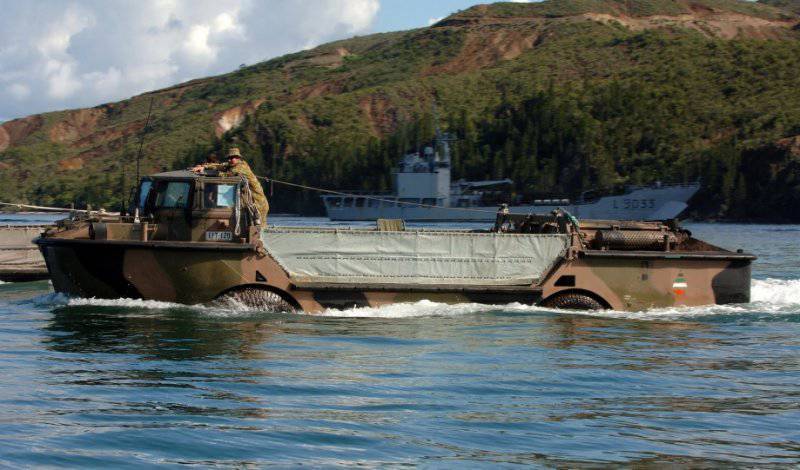
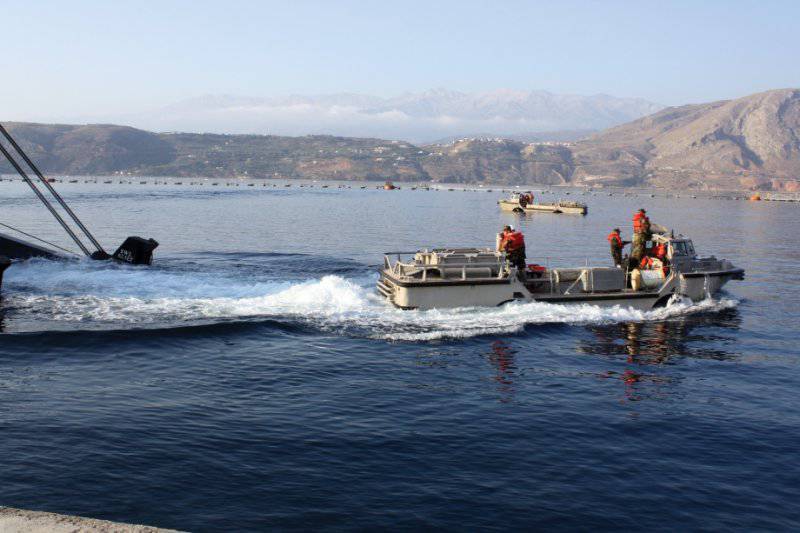
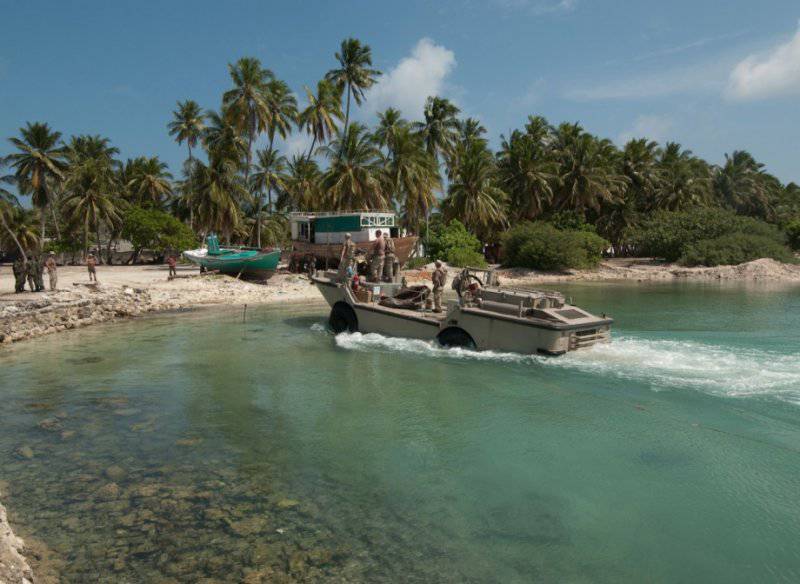
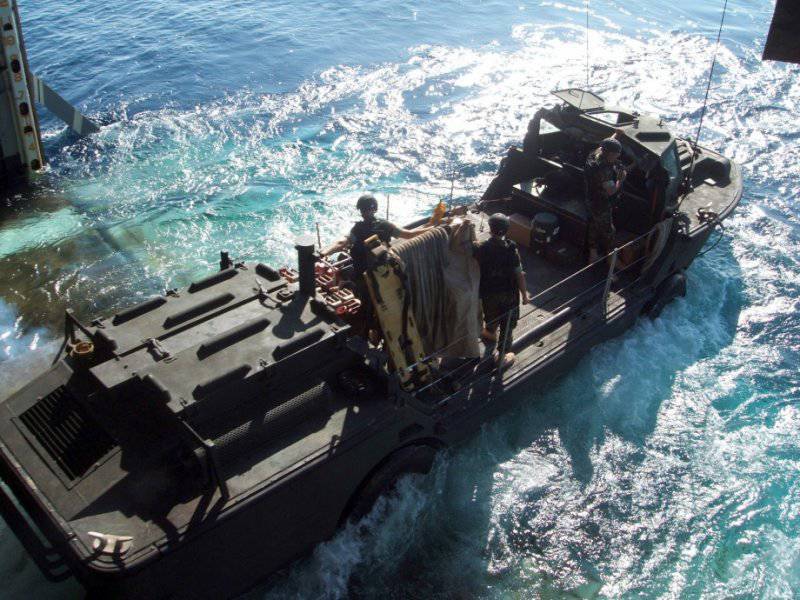
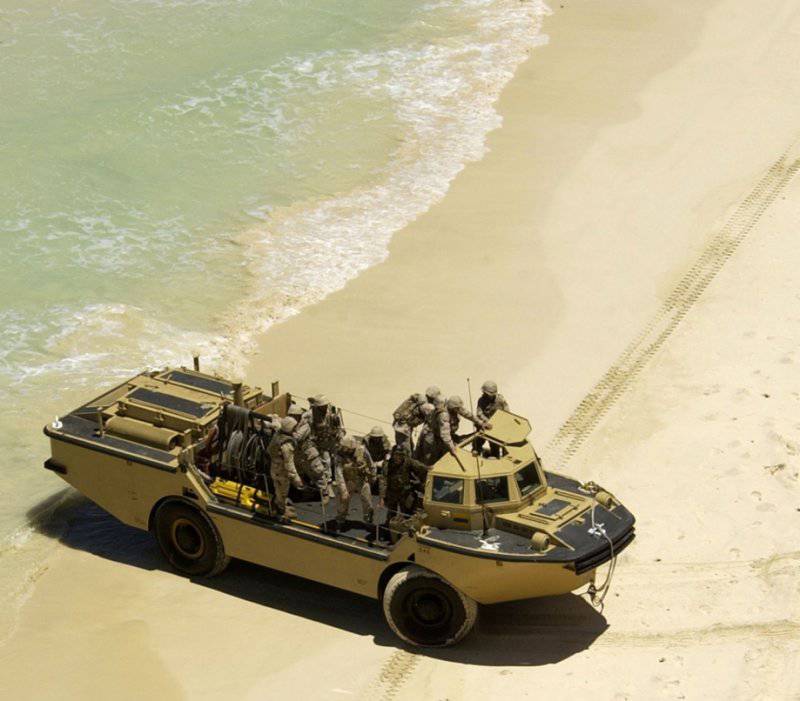
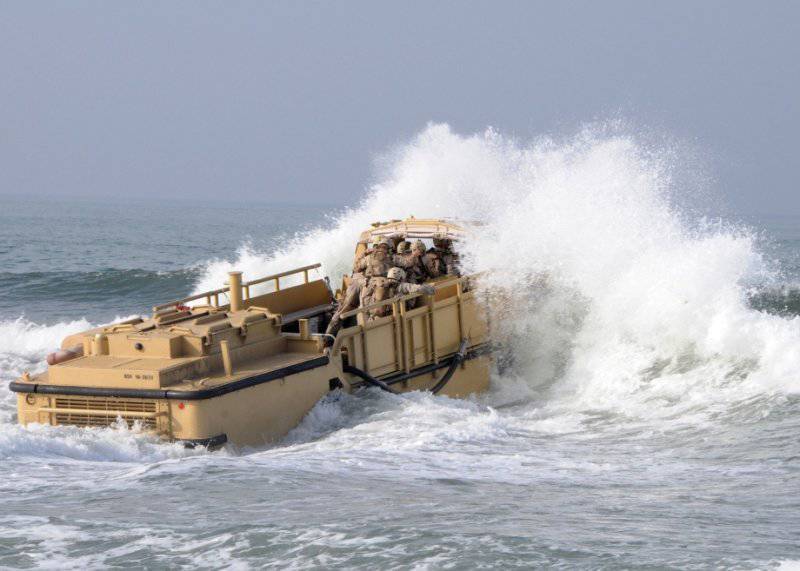
Information